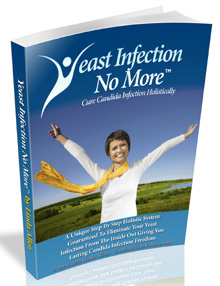Easy Tips On Home Remedy For Yeast Infection
Free Video Reveals 1 Weird Tip To Quickly Cure Your Candida Overgrowth & Enjoy Permanent Freedom From Yeast Infections In As Little As 12 Hours - Guaranteed!
>> Yeast Infection Guaranteed Treatment Click Here <<
Yeast infections are an annoyance which many of us women are plagued by, some more than others. The current estimate is that 3 out of every 4 women will experience a yeast infection in their lifetime, but some of us get them far more often than others. If you just get one every now and then, its not so bad to rely on the over the counter prescriptions, but if you have recurring yeast infections then finding a good home remedy for yeast infections becomes important.
Yeast infections usually appear when the pH balance inside the vagina raises and becomes alkaline rather than acidic, which can be trigged by things such as period, pregnancy, diabetes, birth control pills, steroids, or antibiotic use. When the acidic pH levels of the vagina become alkaline, a fungus called Candida albicans can become far more active. This fungus is always present in small quantities but is usually held in check by the acidic levels in the vagina. When this fungus starts growing more actively a yeast infection will then occur. Yeast infections may occur more frequently after menopause due to lower estrogen levels, which can thin the vaginal walls.
However if you pay attention to your body you should never need to resort to more harsh chemical prescriptions as it is easy to find a more gentle home remedy for yeast infections. Most of these methods are completely natural and possible with household items, and if you are one of the unlucky ones who suffer more common infections they are so gentle as to never cause you any ill effects while still being very effective.
A very good home remedy for yeast infections is to simply douche the vagina with a hydrogen peroxide solution. Mix one teaspoon of regular 3% hydrogen peroxide with a cup of water and use as a douche once a day. Repeat this until the symptoms are gone and you should be fine. This method has worked well for me in the past.
One method to definitely avoid is Echinacea tea douches. Though the tea will give you a nice tingly sensation on your tongue and is a well known natural herb, it will give you an extremely powerful and unpleasant burning sensation if used as a douche. We?re talking absolute fiery pain here, definitely do not try this method.
I got all these natural yeast infection cures from a great resource devoted solely to naturally curing yeast infections. I highly recommend you check it out as its great for finding a good home remedy for your yeast infection
Labels: male_yeast_infection, oral_yeast_infection, pregnant_yeast_infection, untreated_yeast_infection

